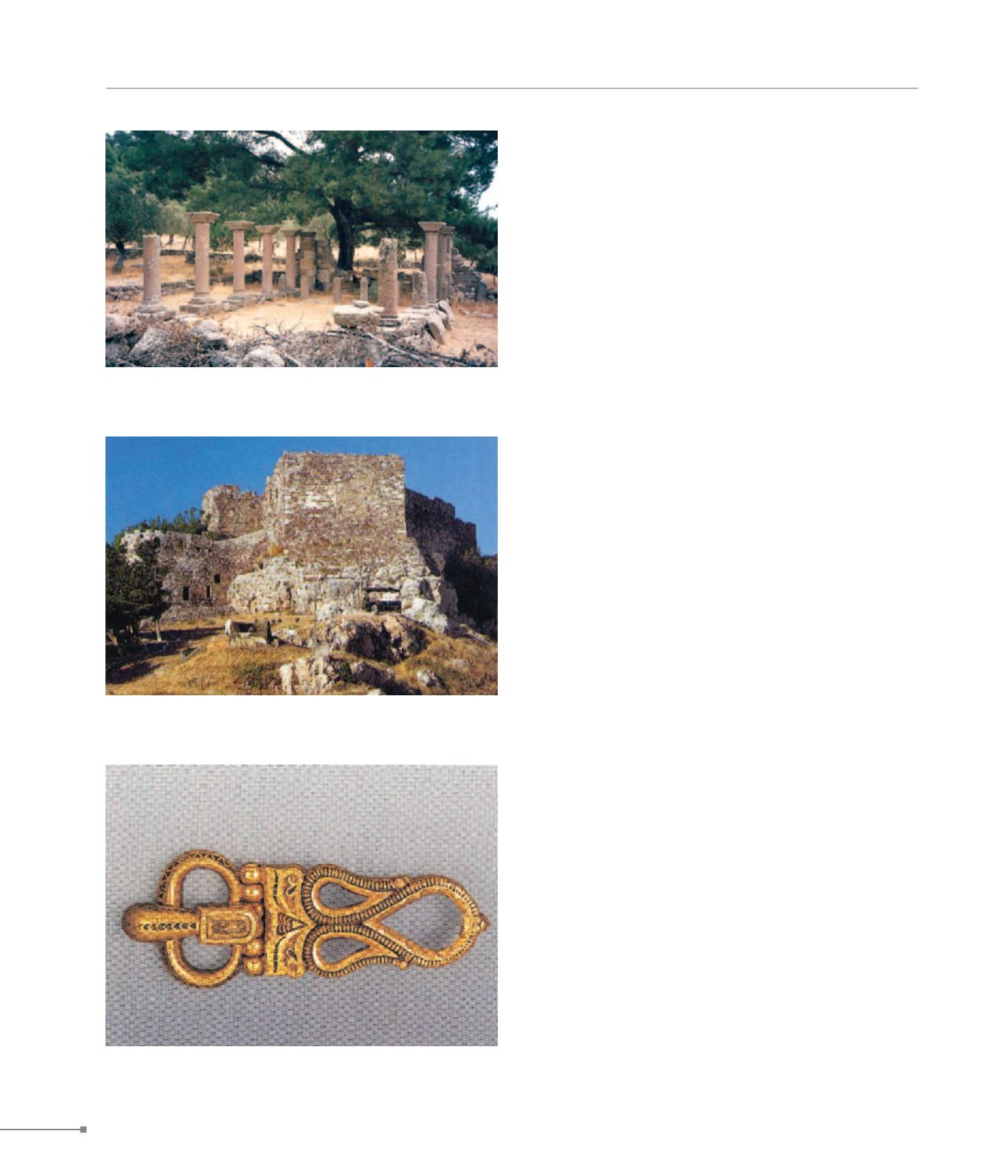
Lesbos.
Lesbos.
THE ISLANDS
320
572. Lesbos, Krategos hoard, golden fibula (Λέσβος, θησαυρός
Κρατήγου, χρυσή πόρπη)
572. Lesbos, Mytilene Castle (Μυτιλήνη, Κάστρο)
572. Lesbos, Chalinado basilica (Λέσβος, Χαλινάδο, βασιλική)
The castle of Mytilene, a naturally protected location, was
separated from the rest of Lesbos by the channel of Euripus.
It was probably constructed in the 6th c., and traces of its
original phase can be observed: on the E wall of the atrium
in the upper castle’s five-towered enclosure; at the Byzantine
postern that connected the castle with the harbour; at the sec-
ond gate of the middle castle; and at the cistern that occupies
the site of a Roman public building. The castle was repaired
by Byzantine Emperor Alexius I Comnenus (r. 1081-1118) and
in 1373 by the ruling Gattelusi family, when the fortifications
were strengthened with two defensive structures on the coast:
Loranda’s rampart at the N harbour and the Kastrelli in the S.
Basilica at Argala. (2)
This early 5th c. basilica is located at Argala of Neapolis, 6 km
S of Mytilene. On its ruins has been built the chapel of Aghia
Euprepeia. The basilica is of the Syrian type. To the S stood an
annex, possibly a martyrium or a mausoleum, with three buri-
als detected in the interior. Another oblong apsoidal annex is
adjoined to the S aisle of the basilica and has been thought a
refectory or a guesthouse.
Krategos Hoard. (3)
The Krategos hoard, which was found near the present airport
and includes gold and copper coins, jewellery and utensils,
dates from the critical period of the 7th c. It is exhibited in the
Athens Byzantine Museum.
Loutra. (4)
A three-aisled Early Christian basilica of the 5th c. is located at
the Tsesmedes site, 2 km S of Loutra. The nave and narthex
have mosaic floors. In front of the entrance to the main church
was a dedicatory inscription: “Υπέρ ευχής κ(αι) σωτηρίας
Aγωστίν(oυ)” (To bless and save Agostinos) that does not
survive today.
Hosios Gregorios Monastery. (5)
At Prigiami in Skopelos Geras survive the ruins of the two-
columned, domed, cross-in-square catholicon of the Hosios
Gregorios monastery, dating from the second half of the 12th
c. Hosios Gregorios was buried in the narthex.
Kato Tritos. (6)
The small, single-nave catholicon of the Taxiarch monastery
here is one of the very few examples of domed churches on
Lesbos. It dates from the 15th c. and features wall-painted
decoration of the second half of the 17th c. Traces of the mon-
astery’s cells can be discerned to the N and E.
Agiasos. (7)
On a 580 m hill is the Kastelli fortress, dating from the 9th-10th
c. The fortification survives to foundation level round the edge,
though in the E section the Byzantine phase is preserved at
a good height. There is access via a stone-paved path. There
was a xobourgo (settlement outside the castle) protected by
a bulwark.


